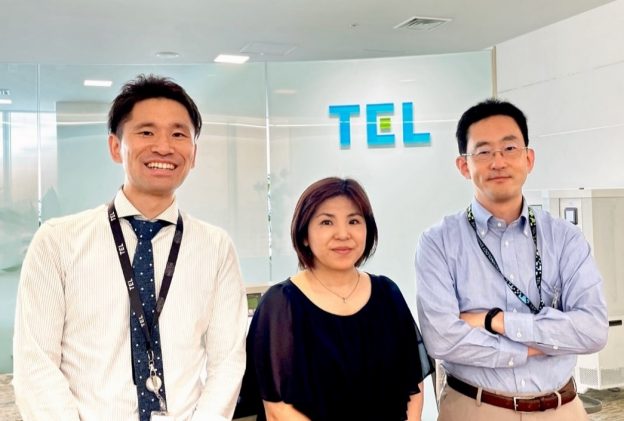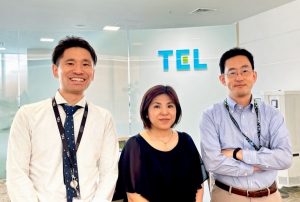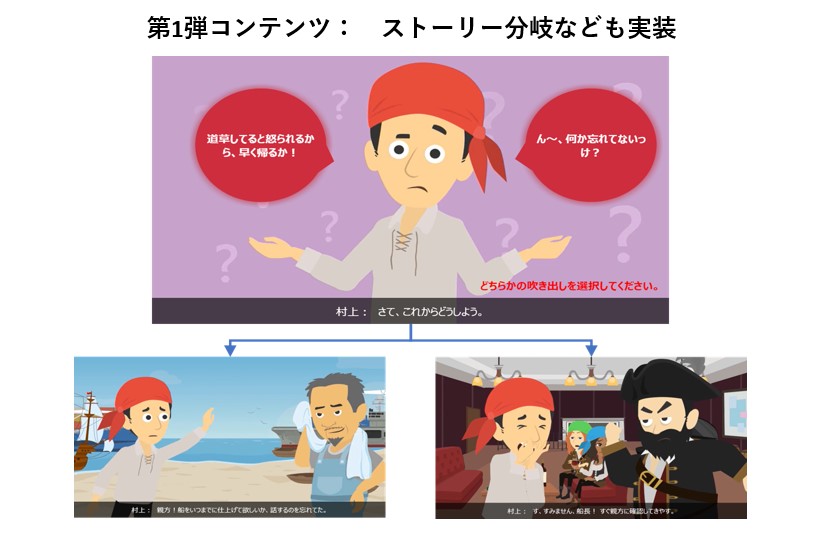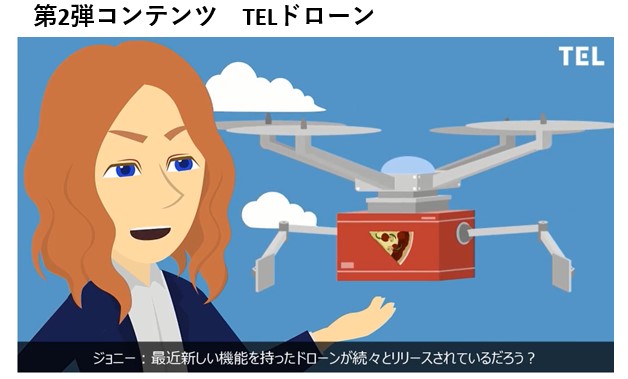Tokyo Electron Ltd.
Legal Department Strategic Legal Group (Your affiliation as of 2022)
(From left to right) Mr. Yoshihiro Tanaka, Ms. Kanako Ichikawa, Mr. Kenji Okura
Services Utilized
Production of internal training content
Using animation (Vyond) to convey complex contractual information in an easy-to-understand manner
Produced a series of content using pirate characters in 2021 and 2022
――Please tell us about how you came to request Human Science.
Mr. Tanaka: I was introduced by our HR department and had a conversation.
Referring to awareness activities such as the Ministry of Justice's Momotaro manga (Civil Code revision) and the Ministry of Foreign Affairs' Golgo 13 (overseas safety measures), I was inquiring with 2 to 3 companies about whether content would be better as a manga or as a paper play with fewer illustrations.
What were the reasons for choosing Human Science?
Mr. Tanaka: At the initial stage when we first reached out, our image of content creation was still half-baked, and we didn't know what to do.
Mr. Ichikawa: Among the various companies we spoke with, I felt that your company understood our intentions the best.
During our discussions, the impressions we received, such as 'It would be better to shorten XX' and the ideas provided on the spot, were very positive.
Mr. Tanaka: Initially, we were considering creating content in the form of comics, but your company suggested animation.
Other vendors also proposed ideas like RPG games incorporating gamification elements. However, we found that it wouldn't work well with the human resource management system we use. We could have used the system from the vendor who proposed the RPG game if we rented it, but we decided against it due to the difficulty of long-term operation.
--- Have you felt challenges with the traditional educational content?
1) Visually easy-to-understand content
Mr. Tanaka: Since our company has bases both domestically and internationally, we have been utilizing e-learning. Among them, contracts tend to become difficult to approach, so we believed that visually easy-to-understand content was necessary.
2) Memorable content
Mr. Ichikawa: Until now, many training videos with audio have been created using PowerPoint, and there have been requests from upper management that the recent educational content is boring. If we are going to use the valuable time of employees, we want the content to be memorable. Therefore, it was determined that just a PowerPoint explanation was insufficient, and it needed to be made interesting.
"Now it's 'Aim for the Legal Department!?'"
Mr. Ichikawa: The use of animation, which is completely unrelated to the business of piracy that came up in discussions with your company, was our first attempt, but it has been very well received internally, and now there is an atmosphere of 'if we're going to create educational content, let's aim for the Legal Department's content' (laughs)
――Were there any concerns while progressing with the project?
1) Whether it fits the budget
Mr. Tanaka: The biggest concern was the budget. We had a rough idea of the budget, but the cost for manga was high, and we were unsure if it was acceptable to spend that much. In the end, your company proposed Vyond animation, and I believe we were able to produce something of the expected quality at a relatively low cost.
2) Whether the deadline could be met
Mr. Tanaka: There was also a restriction that the delivery deadline was by the end of March. The delivery was split into two parts: we first received the Japanese version, and the English version was received around May.
3) The scenario was vague...
Mr. Tanaka: At first, we created a story outline ourselves, submitted it to your company, and held meetings. However, we didn’t know how to properly convey the image or purpose.
Mr. Ichikawa: It was our first time involved in production, and at first, we didn’t understand how to read the storyboard in Excel that your company created. Also, it was difficult to explain the storyboard to the lawyers. But the flowchart was easy to understand.
Also, you submitted two ideas, A and B, and asked us to choose one, but we suggested a different idea C, so the direction changed midway, and we sometimes asked HS for new tasks (laughs).
――It’s common that after shaping something to some extent and presenting it to the client, the discussion changes. Since we received proactive feedback from your company, there were many learning points. There were also parts we wouldn’t have noticed without your input.
-- What was the response from employees after the implementation?
Mr. Ichikawa: As a result, the participation rate was very high. Over 5,000 employees responded to the survey included at the end of the course. In the second round of content, 99.5% understood it and 98.7% found it to be a beneficial course, and the survey results exceeded our expectations. There was also a free comment section, and some employees wrote comments.
――What kind of opinions were there in the free comment section?
1) Negative Opinions
Mr. Ichikawa: Regarding the first course, there was feedback that 'the animation duration is too long.' It was also pointed out that the lack of audio made it seem like the training was not being attended during work hours, leading to requests for 'the TEL logo to be included.'
Some people felt that the content was too basic, but I believe it was well understood as we prepared tests and included detailed explanations.
After actually implementing it, some participants felt that this training was different from previous ones. It seems that some were confused by the drag-and-drop functionality.
Mr. Tanaka: In the second round, we improved features such as drag-and-drop. We also shortened the animation duration and added audio to the characters.
2) Positive Opinions
Mr. Ichikawa: In reality, most feedback was positive, stating that it was educational and approachable. About 70-80% of people were satisfied.
Mr. Okura: The legal department initially released it in Japanese and English, but due to local requests, a Chinese version has already been created.
Mr. Ichikawa: After that, a Taiwanese version was also created. We are considering a Korean version, but there is also a possibility that we can manage with the already created English version, similar to Singapore.
--- This time, we have imposed restrictions on the content, such as not being able to proceed until the slides are finished. What are the opinions from the participants?
Mr. Tanaka: There were no particular opinions regarding the restrictions, but there was a suggestion about whether it would be possible to watch at double speed.
-- The correction for the speed increase is likely possible with an update to the software being used.
Mr. Tanaka: The mandatory training period for the entire company has ended, but we are conducting training for new employees by having them watch videos with animations, so I would like to discuss the implementation.
-- Have you experienced any noticeable changes in learning effectiveness?
Mr. Ichikawa: Currently, it is difficult to clearly state which measures have brought about what effects, as we are implementing various initiatives within the legal department, not just the training videos. However, thanks to the approachable characters, I feel that the barriers to the legal department have lowered.
Speaking of changes, a common foundation has been established. In-person training on confidentiality agreements and the application of contracts can now be attended by everyone who has completed the animation training. I feel that explanations have become easier during in-person training compared to before.
Mr. Tanaka: It seems to be well-embedded among the employees.
Mr. Ichikawa: Nowadays, the image of the legal department is firmly associated with pirates and TEL drones (delivery machines that appear in the content).
-- Are there plans to create other content in the future?
Mr. Tanaka: There are no decisions yet regarding the third installment, but there is a possibility of considering training based on the NDA from the second installment as a company-wide training.
Mr. Ichikawa: We are also considering compiling short videos related to FAQs that involve all employees, such as general negotiation skills. "Company-wide training" will be a major element in content creation.








